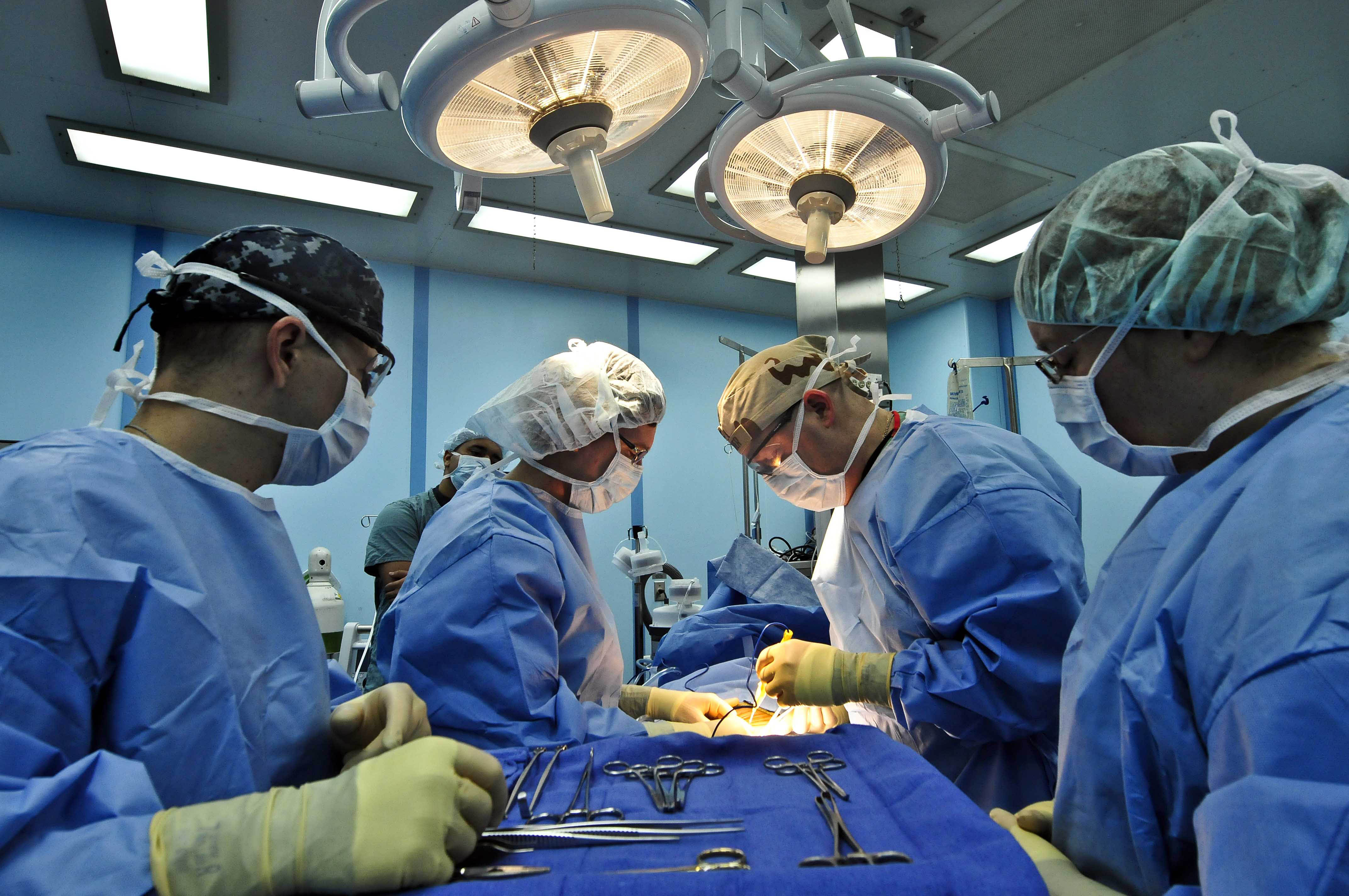
Before my wrist surgery, I did research. The medical journal articles all said that standard protocol for scapholunate repair was to leave in surgical screws no more than 12 months. My surgeon said, “We’ll see. Sometimes we just leave it in there.” A long discussion ensued. Post-surgery, the conversation continued. At each post-surgery follow-up, we discussed the screw. X-rays continued to show that the screw was not moving – it was stable. The wrist healed well.
However, about 18 months later the wrist began to ache. There was pain with basic actions. The wrist would throb, and I would ice it in the evenings to get some relief. At the next follow-up, x-rays showed that the screw was loose and had possibly migrated a bit, so that it was possibly impinging on an adjacent bone/nerve.
The surgeon went from “We’ll leave it alone as long as it’s not causing problems” at previous visits to “That’s it! It’s coming out.” “How soon do you want to schedule the surgery?” I asked, thinking he’d say “No rush, what would work with your schedule?” and we’d find a date in the next six months. “Tomorrow?” he joked, following up with “As soon as possible – within the next month.”
“Ok, it hurts, but what’s the hurry, doc?” “Well, besides the pain it’s causing, it would be really bad if you fell – bent or broken screws are bad.” So I had to ask, “Yeah, how *do* you remove a bent screw? Do you have to cut it into sections and remove each section separately?” To which he replied, “If it’s bad enough, sometimes we just have to leave it, because we can’t get it back out.” Yikes!
Needless to say, I was very cautious leading up to the surgery. Fortunately, I avoided damaging the screw.
Surgery went very smoothly, although the surgeon threw me a curveball in pre-op. He suddenly informed me that if the hole left by the screw was larger than desirable, he’d like to fill it with cadaver bone. He knows I research every action thoroughly, so I was a bit stressed by this last-minute information, which would lead to a less-informed decision than I prefer to make.
Although I have no problem with the use of cadaver bone in general, I decided not to exercise that option for myself because my body is hypersensitive and overreacts to substances most people can tolerate, like fragrances and chemicals.
When I reminded my surgeon of that, he told me that another option would be to use my own radius bone as a donor by shaving some bone from the radius and inserting it into the hole in my scaphoid and lunate bones. This sounded like a much better option for me, given that I cannot even tolerate the adhesive on band-aids on the outside of my body. So that is what he did.
Hardware removal is typically a quick and easy procedure. Since all they were doing was removing a screw from my wrist, the anesthesiologist used a lighter anesthesia, and did not do a nerve block at my neck. He did use some type of local anesthesia at the site, because my thumb was numb for about 12 hours afterward.
My orthopedic surgeon removed the screw arthroscopically. He did not like the size of the hole left by the screw, so he removed small pieces of bone from my radius and packed them into the hole. Then he stitched the incision closed and my wrist was wrapped in a soft cast.
I wore the cast for two weeks. My arm itched like crazy*, so I kept the arm iced for two weeks, which gave me relief from itching and from pain. [I used a re-useable cold pack, which we placed in a zippered pillowcase to protect my skin and to keep the ice pack from sliding around as much.]
[*I was probably having an allergic reaction to the soft cast. If I had experienced additional allergy symptoms beyond itching, I would have called my doctor’s office and informed them of the problem and asked about possible alternatives to the soft cast.]
I did not experience much pain. There was a dull ache for the first few days, and my wrist would hurt as it became fatigued. I treated the pain with Tylenol and frequent icing. I also kept my wrist elevated above my heart and propped my wrist up on pillows whenever possible. I also slept with my arm in a sling, as ordered, and propped up on a pillow.
So, basically, the formula RICE [Rest, Ice, Compression, Elevation] worked well for me. [The soft cast partially consisted of compression bandages.]
Two weeks post-surgery, I went for a follow-up visit, at which time they removed the cast and the stitches. The doctor applied a few steri-strips over the incision site and gave me a wrist splint to wear for another 2-4 weeks, including while I slept.
They also took x-rays to see how the healing was going. I could see the hole in my bones where the screw had been, the metal clip the surgeon used to reattach my scapholunate ligament in my first wrist surgery, and the area where bone was shaved from my radius.
My surgeon had asked if I wanted to keep the screw [he knew I would]. Of course I said yes. So after the screw was removed it was sterilized, and they returned it to me at the two-week follow-up:

Unlike my first wrist surgery, after this surgery I had a lot of bruising and discoloration. Initially, my thumb turned dark purple, almost black. I did the press test (a.k.a. capillary nail refill test) on my thumb nail and the blood flow was fine, so I just kept a careful eye on it for a few days. Fortunately, after a few days my thumb stopped getting darker, and started turning the green of a healing bruise.
Once my cast was removed I could see that my hand and wrist were bruised too. The surgeon said the bruising was mostly due to having shaved bone from my radius. If I had chosen to use cadaver bone, I probably would have had much less bruising and less pain.
At the two-week check-up I was cleared to drive and to get the incision area wet, but I was given a weight-lifting restriction of 2 pounds or less.
Six weeks later (eight weeks post-surgery) I had another follow-up with my surgeon. He (and I) were very happy with how the incision was healing. X-rays were taken again, and we could see that the bone graft was filling in the hole left by the removal of the screw. However, I had noticed that my wrist and hand were weak and that I was having tendon pain in my anterior (palm-side) wrist and in my lateral (outside) elbow. The surgeon confirmed that my tennis elbow had returned, but didn’t have an explanation for why the inside of my wrist would be hurting. He recommended that I do some gentle exercises at home and give it more time to heal. He also increased my weight-bearing limit to 5 pounds.
Although I had stopped wearing the wrist splint approximately 5 weeks after surgery, I decided to start wearing it again in order to give the wrist more support and more time to heal. After about a week (nine weeks post-surgery) I didn’t feel like I needed it anymore, but wearing it for that week had taken strain off the sore tendons and they were feeling much better.
My final follow-up with my orthopedic surgeon was four weeks later (twelve weeks post-surgery). The final set of x-rays looked good, and I was released from his care.
For those of you who are keeping score, the injury occurred in early 2014. After four plus years and five surgeries to repair the damage (and remove my loose screw 😉 ), this appears to be the conclusion of that episode.
[Unless the tennis elbow requires another surgical correction. My surgeon previously performed a tennis elbow release (a.k.a. lateral epicondyle release), but when I told him the elbow was symptomatic again, he informed me that sometimes scar tissue can form post-surgery and cause restriction, pain, or both at the surgical site. Before I would have another surgery, I would try a cortisone injection and more physical therapy.]
The last surgery was the easiest one from which to recover, but I am glad to have that all behind me. [Have you ever tried to blow your nose with only one hand?]
As I have already said several times, BEWARE SLIP-AND-FALL INJURIES!
BONUS: Anything you ever wanted to know about orthopedic hardware












.jpg)




